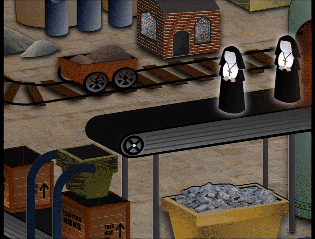The Wonderful World of Ants

Ah, ants! Ants, ants, ants, ants, ants! Apologies, I was reminiscing. Since the dawn of time, ants and mankind have lived hand in hand. Palaeontologists have discovered Neolithic cave paintings that depict ant hunts, the most well-known example being a startling image of a mighty stag ant being brought down by a single spear, which adorns a wall in Lascaux.
Later, of course, humans learned how to domesticate the ant, coming to rely on its plentiful and sweet-tasting milk for their nourishment, and using its soft, downy pelt to insulate themselves from the harsh winters. Even today, ants are still used to irrigate fields, lay cables, power turbines, make sandals, fit carpets, sell motor home insurance, assemble electronic circuitry, round up sheep, track illegal narcotics, stitch wounds, calibrate GPS equipment, carry out surveillance and dig for tin. And let's not forget that long before Neil Armstrong and Buzz Aldrin landed on the moon, it was an ant that first set foot upon the lunar surface. Six feet, to be precise.
But for me it is the almost infinite variety of ants that I find so fascinating. I have studied ants all my life, and will often observe them for hours on end, until I start to see spots before my eyes and the ants themselves begin to get paranoid. You may have thought that there are only two types of ants - red ants and black ants - but that's because you are impossibly naïve and don't know nothing about it. In fact, not only are there many different species, but there are also many different adaptations within each colony.
And so I am on a mission - a mission to educate the general public about the wonderful world of ants - and to this end I have prepared the following guide to some of the more interesting examples you are likely to see in your gardens, outhouses, kitchens and cupboards. I am hopeful that this will encourage a greater appreciation of the kingdom of the ant and help to spark a genuine interest in the subject so that finally, dear reader, you and I might be friends.
Standard Worker Ant

So this is the ant that you're most likely familiar with, usually to be found scurrying around, apparently randomly, or massing in large numbers during a picnic. Many people profess to being wary of ants, and yet there's really very little to be worried about. Stand your ground, don't show your fear and try not to make any sudden moves, and you should find that you survive the encounter unscathed. Ants have tiny brains but even they are aware that you're much bigger than they are, so they will attempt to avoid you if they can.
Lantern Ant

"Hey!" people often shout at me in the street. "How come ants don't come out at night?" Well, the answer is that certain specialised types of ants are indeed nocturnal. The lantern ant has built-in arse illumination, meaning that it can operate after sunset, when there is less traffic about and it can get more stuff done.
Parasol Ant

The other great advantage of the lantern ant is that it avoids the harsh heat of day. The parasol ant has dealt with this problem by growing its own sun shade. There are two varieties: the collapsible parasol ant and the non-collapsible parasol ant. The non-collapsible version is far less common as it is often unable to get back through the narrow doorway to its nest, and is therefore vulnerable to predators.
Trumpet Ant

On the subject of predators, the trumpet ant has evolved a means of both raising the alarm and disabling its attacker. Its twin horns deliver a sharp blast that notifies other ants of the impending danger and creates and shockwave that can temporarily disorientate the aggressor. Many people cite the trumpet ant as evidence of intelligent design, asserting that it is not possible for brass instruments to evolve through a process of natural selection. (See also the cornet gull and the trombone squid.)
The Bullhorn Ant

A more technologically advanced adaptation of the trumpet ant.
Flying Ants

You will be aware of flying ants, but you are most probably unaware of the many varied ways that ants employ to get airborne. The jet ant, for example needs to reach a fantastic speed to achieve lift. This means that it requires a sizeable runaway and is also prone to colliding with windows, walls, trees etc. The heli-ant, the on the other hand, can take off from anywhere, but provides easy pickings for birds, usually because it's so pleased with itself once it gets airborne that it completely fails to notice that it's about to get eaten.
Rodeo Ant

All but extinct these days, at one time rodeo ants used to thunder across the plains of Midwest America is great herds, their headlong stampede raising dust clouds that could be seen for miles around. Tame rodeo ants were commonly used on cattle drives, their sturdy six-legged stride making them ideal for the rough and uneven terrain. Unfortunately, since ants are relatively small and cowboys are substantially larger, they couldn't be ridden for more than a few miles without their backs snapping. This is why so few of them survived and the small number that remain are a protected species.
The Chicken Ant

Science has produced some wonderful things but the nightmare abomination that resulted from the ill-conceived scheme to cross a chicken with an ant is most certainly not one of them. Thankfully, the laboratory that produced them was decommissioned in 1973 and the last remaining example of this mutant species was walled up in its abandoned incubation centre, along with the maniac who created it.
The Stag Ant

The mating habits of ants are indeed extraordinary, and for me this has always been a subject of great interest. For the record, I am not a pervert and this is a completely legitimate area of study. By far the most impressive example of courtship within the ant kingdom is provided by the stag ant, which uses its impressive antlers to fend off rival males. Stag ants will often fight to the death, the survivor winning the right to mate with the female or 'doe', while the loser is made into a very fetching and impressive coat rack.
Extended and Chunky

Two interesting examples of adaptations that can be seen in most ant colonies. The extended ant is blessed with additional pairs of legs, making it much speedier and therefore ideal for conveying news of imminent danger and other urgent communications. The chunky ant is much slower, but can carry a much greater payload. Even ants need somewhere to put stuff.
The Double Header

Often called the 'push me pull you' ant, this creature has solved the tricky problem of not being able to turn round in the narrow corridors of the ant nest. The double header does not have an anus, instead having a second head, meaning that it can simply reverse direction. Extraordinarily ingenious though this is, the lack of an anus presents problems of its own, as the inability to get rid of waste means that the ant rapidly swells up and is unable to enter the tunnel in the first place.
Soldier Ant

You've no doubt heard of soldier ants but have you ever stopped to consider how they are armed? As you would expect, they are equipped with what is, to an ant, the ultimate weapon - a magnifying glass. This enables them to focus a beam of sunlight with laser-like precision and burn their enemy to a crisp in seconds. Actually, this is only the second deadliest type of ant - the extremely rare boiler ant can wipe out a whole next with a single kettle of hot water, but these only exist in small colonies in South America.
Skater Ant

There is nowhere on the planet that has not been colonized by ants, from the baking sands of central Africa, to the icy wastes of the Arctic you will find the humble ant. And it is in this last location where, if you are lucky, you can see seething columns of skater ants, streaming like endless black rivers over the surface of the ice. They are well known to the Inuits, although where they come from and where they are going has been a mystery for centuries. One thing is certain: although they can glide over the ice with no apparent effort, the ability to stop seems to have eluded them.
The Dapper Ant

Finally, my favourite: the dapper ant can be seen most evenings wearing a top hat, a satin-lined cape and carrying a silver-topped walking stick. He's most probably off to the theatre, or perhaps a cocktail party or private function. Stop him and say hello and he'll always politely doff his hat. Just don't expect him to stick around for too long - this ant is much in demand and has places to be, although he will usually present you with his card and promise to keep in touch, if you keep a civil tongue in your head.
Taken from The University of the Bleeding Obvious Annual 2021


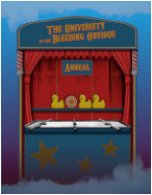


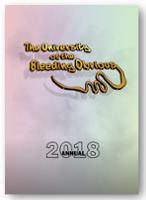















 Nobby Wentworth's Pet Surgery
Nobby Wentworth's Pet Surgery Kitchen Olympics
Kitchen Olympics Gin!
Gin!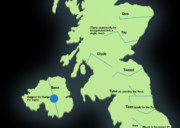 Rationalising Britain's River Network
Rationalising Britain's River Network The World Bullshit Record
The World Bullshit Record New Horizons in Business Management
New Horizons in Business Management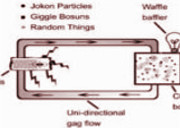 Not Funny
Not Funny Discovery of Vitamin G
Discovery of Vitamin G The Detangulator
The Detangulator Pirates
Pirates
